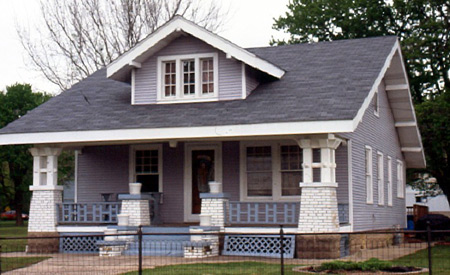For any of you Sears Home enthusiasts:
If you think houses built from kits are shoddy, cheap and obvious, think again. Between 1908 and 1940, Sears sold about 70,000 homes in all 48 states through their mail-order Modern Homes program, with 370 designs that you might not readily recognize as a kit home. Sears kit homes were shipped via boxcar and came with a 75-page instruction book. Each kit contained 10,000 - 30,000 pieces and the framing members were marked to facilitate construction. Many decades later, those same markings can help identify a home as a Sears kit home. So if you're wondering if that adorable little bungalow with the big eaves (or even your own house) is a kit home, read on for signs that will help you identify if it is indeed a historically significant Sears kit home.
Read the full how-to at wikiHow.
Publication: wikiHow
Length: 1,100 words (9 steps)


A kit home is essentially the same as the plastic battleship model, which is to say that it is only as good as its builder. True prefabrication is what its name implies: fabricated previous to distribution,(usually) in a controlled environment by precision industrial process. The reason I feel it is important to clarify this difference is that much effort and interest is expended discussing kit homes errantly categorized as prefab, when true prefab should really be the focus. Sectional modular is clearly and by far the most truly prefabricated architecture, with certain panelization means only second. SIPs panelization certainly qualifies as prefabrication as the panels are component and systems integral, drastically reducing the required on-site effort to constuct the home, whereas simple panelization or ICF and similar only barely qualify as the on-site effort to construct the home is hardly reduced at all. Kit homes boast only one small degree of difference from conventional construction, and that is that all component parts are cut in factory and provided for installation. This distinction really designates kit homes as only pre-cut, and therefore don't cross the threshold of being truly prefab.